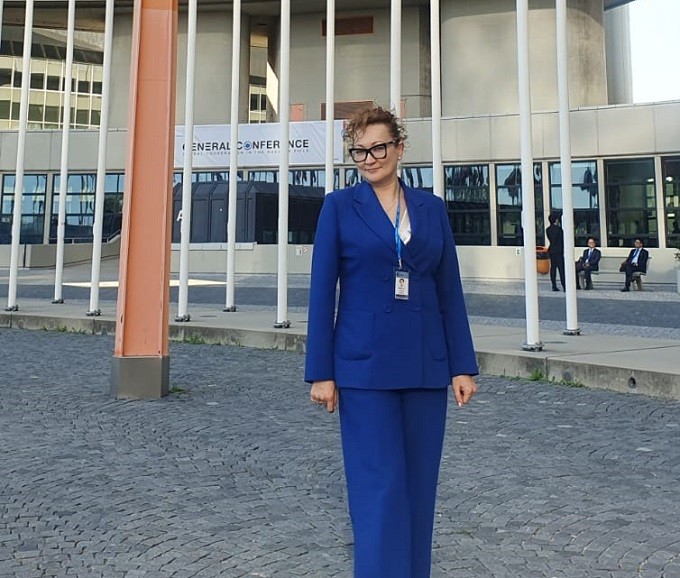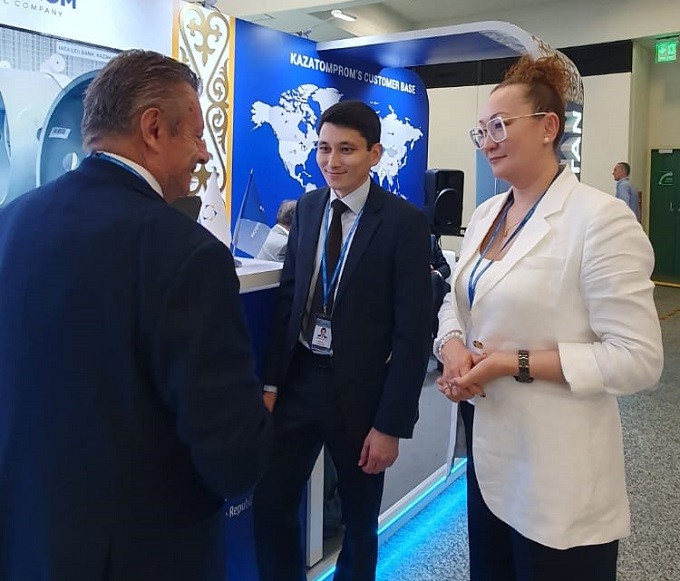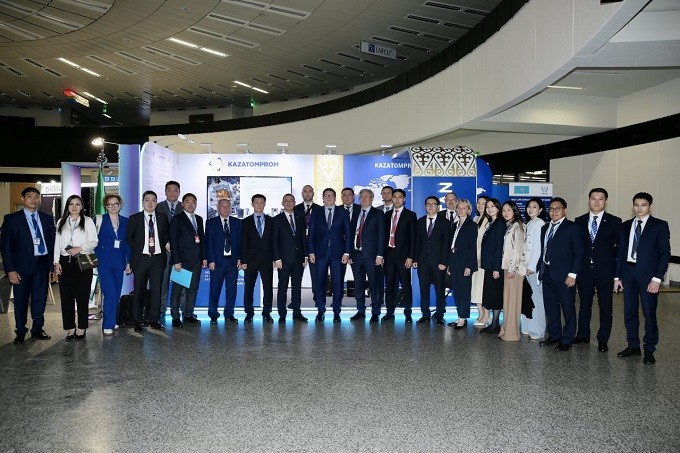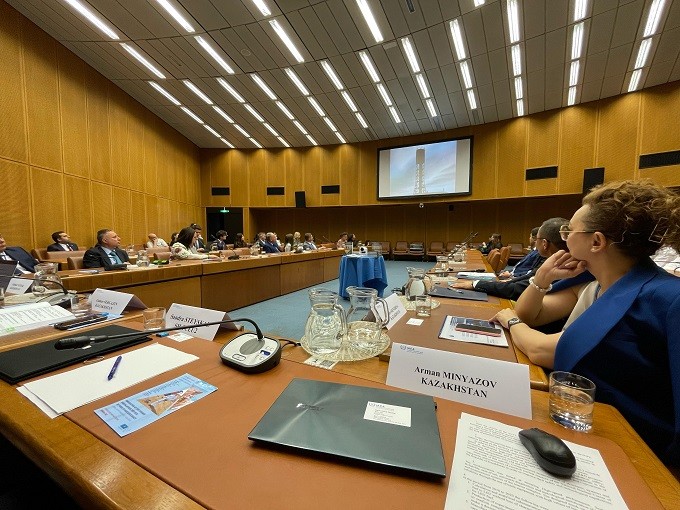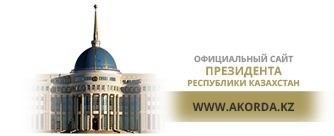On September 26, as part of 67th IAEA General Conference held in Vienna, Austria (September 25 through 29), a side event ‘Remediation of the former Semipalatinsk Test Site: 30 years of IAEA assistance’ was intended to highlight the contribution by IAEA made for Kazakhstan to securing Semipalatinsk Test Site and demonstrate advances through the international cooperation in the national aspirations.
Event speakers were a deputy director general of research RSE ‘National Nuclear Center RK’ V.A. Vityuk, a chief of the laboratory of material testing under conditions of a fusion reactor of the branch ‘Institute of Atomic Energy’ A.Zh. Miniyazov and a chief of the biodosimetric research laboratory of the branch Institute of Radiation safety and Ecology’ L.B. Kenzhina.
Ms. Kenzhina is a IAEA Technical Cooperation Project KAZ2020002 coordinator under which she delivered an oral presentation on the subject ‘Development of Cytogenetic Biological Dosimetry in Kazakhstan for radiological emergency preparedness and response’. In her presentation Laura touched upon highlights related to the development and applications of cytogenetic biodosimetry in Kazakhstan describing in detail the importance of her research in assessing radiation risks and into the public health care in case any radiological emergency arises.
The cooperation between Kazakhstan and IAEA began far back in the 1990s after the nuclear test site was shut down and the nuclear arsenal was eliminated. It has still continued for 30 years demonstrating a fruitful and successful partnership in the field of nuclear safety, remediation and peaceful utilization of nuclear energy. That long-standing and efficient collaboration once more emphasizes Kazakhstan’s commitment to global efforts on assuring safety and peace with the support of the International Atomic Energy Agency.
